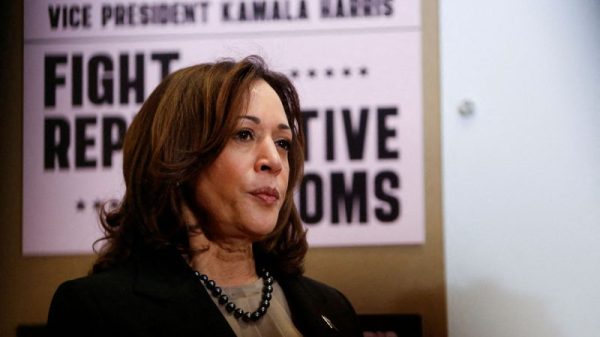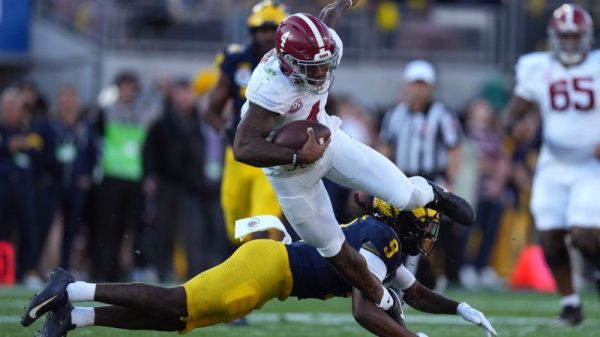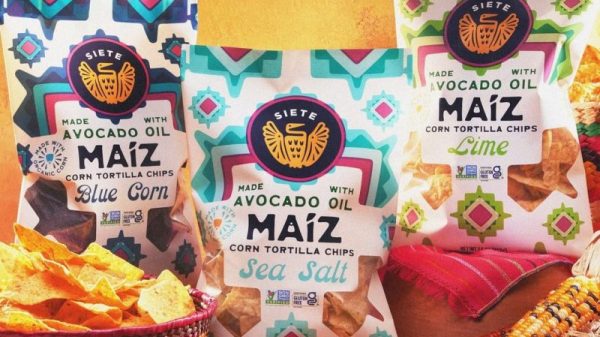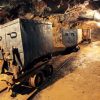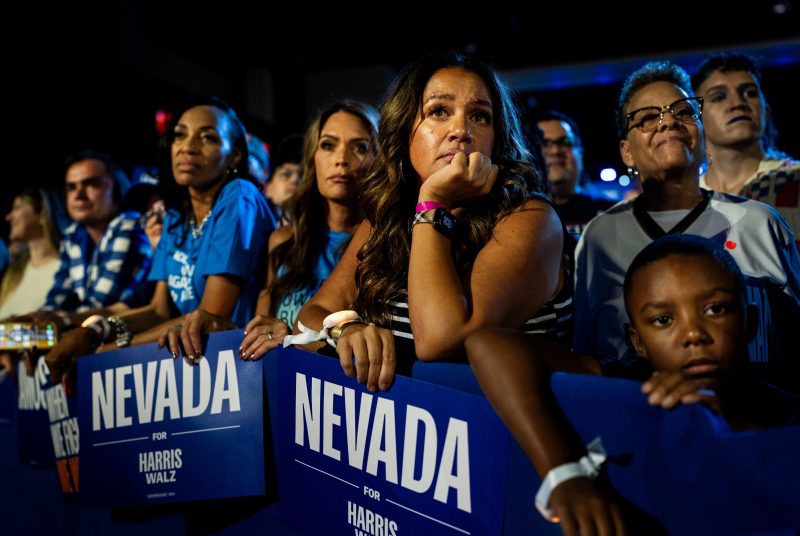
Once the leading edge of Western conservatism, four states in the Southwest have shifted over the last two decades to become a Democratic firewall, giving the party a fighter’s chance of keeping the Senate majority and bolstering their presidential prospects.
Ahead of the 2004 elections, six of the eight senators from this region — encompassing Arizona, Colorado, Nevada and New Mexico — were Republicans. All four states went on to support George W. Bush’s reelection. Today, Democrats hold all eight Senate seats from those four states, each of which supported Joe Biden over Donald Trump in the 2020 elections, the first time a Democrat won all four since 1936.
Democrats are favored to win Senate races in Arizona, Nevada and New Mexico next month, which would help narrow the amount of defense they must play as they try to cling to a 51-49 majority in the chamber. Party operatives are hopeful that these potentially large victories will provide some reverse coattails to boost Vice President Kamala Harris to another sweep of the region’s electoral votes.
The Southwest’s transformation has been incredibly important to helping Democrats offset their losses in heavily rural states. In 2004, for example, Montana, North Dakota and South Dakota sent five Democrats and one Republican to the Senate, a ratio that is exactly reversed in 2024.
Sen. Jon Tester (Mont.), that region’s last Democrat, is fighting for his political life this fall in a race that could be the pivot point to determining the majority. That Democrats have any chance at retaining the majority is possible because of their success in the Southwest.
“It’s probably the single-most successful regional or geographic strategy for the Democratic Party in a generation,” said Simon Rosenberg, a leading party operative of the last 30 years.
Republicans have not given up on this corner of America. Trump is fiercely competing in Arizona and Nevada, four years after narrow defeats in those states. And Nevada Republicans eked out victory two years ago in the governor’s race while narrowly losing the Senate race.
Sen. Steve Daines (Mont.), chair of the National Republican Senatorial Committee, told Axios earlier this year that Arizona is “one of our top pickup opportunities.”
This region’s political metamorphosis is the result of strategic appeals by Democrats to win over the increasingly critical bloc of Hispanic voters. And in recent years local GOP activists, preferring candidates who are Trump loyalists like Lake, have driven more electable candidates to the political sidelines.
“I think that, for Arizona and Nevada particularly, candidate quality has mattered here. The 2022 example is obvious in Arizona, and it’s shaping up to be the same thing this time around,” said Jessica Taylor, the Senate editor for the Cook Political Report With Amy Walter.
In their unsuccessful 2022 races, Lake and Blake Masters, the Senate nominee, antagonized many longtime Arizona Republicans who still embrace a traditional Western conservatism epitomized by the state’s legendary senators, Barry Goldwater and John S. McCain.
Indeed, for more than a century, the West proved fertile ground for Republicans supporting free trade and a strong national defense. The party’s presidential nominees included many whose careers blossomed out West: Herbert Hoover (1928), Richard M. Nixon (1960, 1968, 1972) and Ronald Reagan (1980, 1984) from California; Goldwater (1964) and McCain (2008) from Arizona.
By contrast, Harris is the first Democratic presidential nominee whose career started west of the Rocky Mountains.
The recent Democratic shift seemed unthinkable in the early 2000s, when Bush, who served as governor in nearby Texas and spoke pretty good Spanish, found big support there.
Not only did Republicans hold six of the eight Senate seats in 2004, the GOP held 15 of the 21 House seats from Arizona, Colorado, Nevada and New Mexico.
But Democrats, in a slow and steady campaign, began to chip away at the GOP’s dominance, first winning the governor’s race in New Mexico in 2002 and flipping a Senate seat in Colorado in 2004.
Those candidates, Bill Richardson (D-N.M.) and Ken Salazar (D-Colo.), became the first wave of the long-game effort to appeal to younger and more diverse voters who were starting to dominate these states. Rosenberg found acolytes in a couple of young Democratic activists named Jared Polis and Ruben Gallego.
Polis is now in his second term as Colorado’s governor and Rep. Gallego (Ariz.), after 10 years in the House, is running for Senate and has led Lake in every public poll, some by double-digit margins.
After Bush won Nevada again in 2004, Senate Minority Leader Harry M. Reid (D-Nev.) began a long overhaul of the state’s Democratic operations, placing his loyal lieutenants in charge and recruiting more women and Latino activists to enter politics.
Nevada has voted for the Democratic nominee in four straight presidential campaigns. Democrats have won three straight Senate races, including the 2022 reelection of Sen. Catherine Cortez Masto (D-Nev.), first recruited by Reid to run for state attorney general in 2006. Sen. Jacky Rosen (D-Nev.), recruited by Reid to run for Congress in 2016, is favored to win a second six-year term in November.
Over the last 10 years Democrats have won 12 of the last 14 Senate races in these four states — which now have 14 Democrats and 10 Republicans in the House. A couple of potential gains next month in Arizona could vault Democrats back into the House majority.
New Mexico, Arizona and Nevada rank among the top five states with regard to percentage of Hispanic population, but Republicans have fared better with that voting bloc in recent elections. According to a Pew Research Center study, in the 2022 midterms, 60 percent of Hispanic voters chose a Democrat for Congress, down from 72 percent in 2018, while GOP support grew from 25 percent to 39 percent.
Some public polling suggests Trump and Republicans could reduce that margin again this year, explaining why public polling shows Trump and Harris essentially tied in Arizona and Nevada.
But Rosenberg predicted that, with the overall size of the Hispanic vote continuing to grow, it will yield more raw votes for Harris.
One Pew study found that there are 4 million more eligible Hispanic voters than just four years ago. In 2000, when Hispanics delivered 62 percent of their vote for Al Gore, they made up just 7.4 percent of eligible voters, according to Pew. This year they will make up close to 15 percent of eligible voters.
Harris can afford a slight drop from the 65 percent support Biden received from Hispanics, because there are more votes to be had.
“A slightly smaller piece of a bigger pie is still a bigger pie,” Rosenberg said.
Republicans remain hopeful of breaking through again in a region that was once such a key building block of their national coalition. But to do so, they will likely need better candidates.
Taylor, the Senate race expert, noted how Nevada Republicans seemed to find the right candidate two years ago in Adam Laxalt, a former state attorney general who is son of the late Sen. Pete Domenici (R-N.M.) and grandson of the late Sen. Paul Laxalt (R-Nev.).
Yet Laxalt ran a campaign focused more on conservative cultural issues, while Gov. Joe Lombardo (R) leaned more into economic issues that appealed to swing voters.
“We saw his narrow loss versus the win for Lombardo,” Taylor said.
The last Republican to win a Senate race in the Southwest was McCain, in 2016. Early last month his son, Jimmy McCain, endorsed Harris and his daughter, Meghan McCain, has carried out a public feud with Lake.
“We don’t have a majority in the United States without the bluing of the Southwest,” Rosenberg said.











